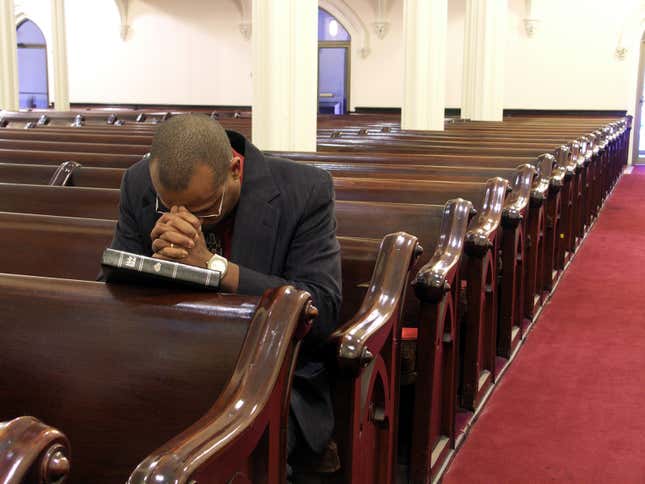
The Black church has always been the cornerstone of the community. It was the place where civil rights leaders organized and where families found emotional and spiritual support. In Washington D.C., as the population of the neighborhoods around their churches change, Black pastors are finding it harder to hold on to members of their congregations. And many are being forced to close their doors for good.
Pastor William H. Lamar IV leads the Metropolitan A.M.E. Church, which is located near the White House. His church, which was built in 1886, is the longest-running Black church in D.C. But in an interview with Politico, Lamar says the area around his church today looks nothing like the place where icons like Frederick Douglas and Rosa Parks once sat. “To see a Black person in this neighborhood is like finding a unicorn grazing in a forest,” he said. “I know congregations around here who did nothing wrong, except the neighborhood where people used to work and live has now become stuff for people with disposable discretionary income.”
Chocolate City no more?
Washington D.C. has always been known as Chocolate City, but since the 1950s, the Black population in the city has been shrinking. The Black population in D.C. was 59 percent in 2000. But the 2020 Census showed that Blacks currently make up only 41 percent of the city’s population.
Homeownership rates are also trending downward for Blacks in the area. The 2019 US Census American Community Survey showed the rate of homeownership for Blacks in D.C. as 34 percent, compared to almost 50 percent for white households.
Much of that can be attributed to income disparities and skyrocketing housing prices. According to Urban Institute data, first-time Black homebuyers with average household income could afford just 8.4 percent of homes in the District sold between 2016 and 2020. White first-time buyers with average income could afford 71 percent of the homes sold.
Churches are working together for change
For developers looking to overhaul an area, Black churches can be easy targets. As Pastor Earl D. Trent Jr. of the Florida Avenue Baptist Church points out, most pastors aren’t equipped with the tools needed to defend their churches against big developers with dollar signs in their eyes.
But some pastors in the area are hoping that by working together, they can make an impact. Pastor Lamar helps lead the Black Equity Through Homeownership program, a group of religious leaders trying to organize D.C.’s Black homeowners to take a stand against gentrification in their city. The group of nearly 50 churches wants to build homes for Black residents, create a fund that supports inherited homes that need repair, produce homeownership workshops, and promote affordable housing, including rental properties.
Reverend Anthony Minter of First Rock Baptist Church says that he’s proud to be a part of a movement that is helping keep Black residents in the area. “No one should have to move states to find housing, even if it’s the DMV. At most people should move to different neighborhoods,” he says.